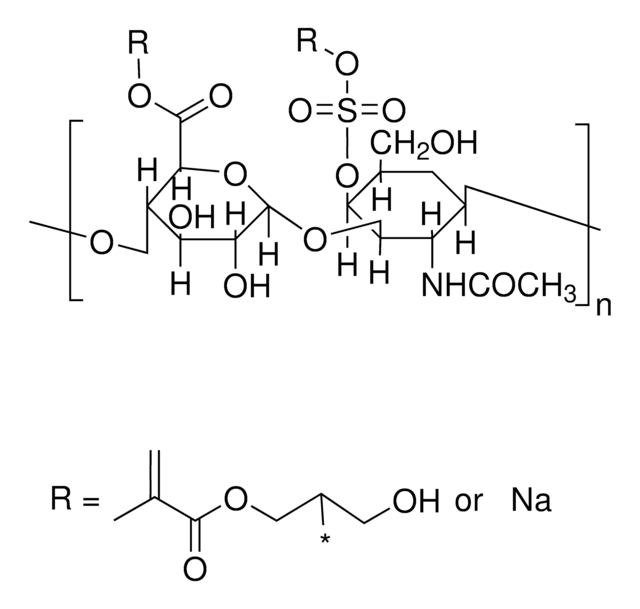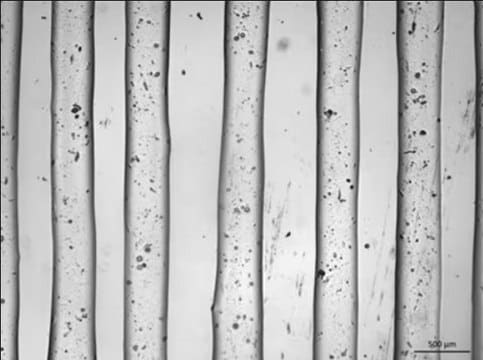推薦產品
描述
Degree of functionalization: 10-30% methacrylation
品質等級
形狀
powder or chunks (or fibers)
顏色
white to off-white
儲存溫度
2-8°C
一般說明
Heparin methacrylate (HepMa) is a functionalized natural polymer that can be used in 3D bioprinting and tissue engineering applications.
Heparin is a naturally occurring linear biopolymer and highly sulfated glycosaminoglycan (GAG). Research has demonstrated that heparin can modulate binding extracellular matrix proteins and sequester growth factors and cytokines, making them useful in 3D applications. The methacrylate-functionalization of heparin allows thermal or photochemical crosslinking via covalent conjugation. Heparins exhibit high anionic charge densities to promote large swelling ratios in water.
Heparin is a naturally occurring linear biopolymer and highly sulfated glycosaminoglycan (GAG). Research has demonstrated that heparin can modulate binding extracellular matrix proteins and sequester growth factors and cytokines, making them useful in 3D applications. The methacrylate-functionalization of heparin allows thermal or photochemical crosslinking via covalent conjugation. Heparins exhibit high anionic charge densities to promote large swelling ratios in water.
應用
Heparin based hydrogels are widely used in tissue engineering, 3D bioprinting, and drug delivery applications.
特點和優勢
- Batch control offers reproducible models for preclinical toxicology testing and drug screening
- Extended shelf-life & stability
訊號詞
Warning
危險聲明
危險分類
Acute Tox. 4 Oral
儲存類別代碼
11 - Combustible Solids
水污染物質分類(WGK)
WGK 3
閃點(°F)
Not applicable
閃點(°C)
Not applicable
Anastasia Nilasaroya et al.
Biomaterials, 29(35), 4658-4664 (2008-09-19)
Synthetic scaffolds show great promise for use in tissue engineering due to their ability to mimic some aspects of the extracellular matrix, however, their use has been hindered by the lack of inherent recognition sites that are required for protein
Hangjun Ding et al.
ACS nano, 8(5), 4348-4357 (2014-04-18)
The emergence of flexible and stretchable electronic components expands the range of applications of electronic devices. Flexible devices are ideally suited for electronic biointerfaces because of mechanically permissive structures that conform to curvilinear structures found in native tissue. Most electronic
Danielle S W Benoit et al.
Biomaterials, 28(1), 66-77 (2006-09-12)
Poly(ethylene glycol) (PEG) hydrogels functionalized with heparin were utilized as a three-dimensional culture system for human mesenchymal stem cells (hMSCs). Heparin-functionalized hydrogels supported hMSC viability, as quantified through live/dead imaging, and induced osteogenic differentiation, as measured by increased alkaline phosphatase
Active Filters
我們的科學家團隊在所有研究領域都有豐富的經驗,包括生命科學、材料科學、化學合成、色譜、分析等.
聯絡技術服務









